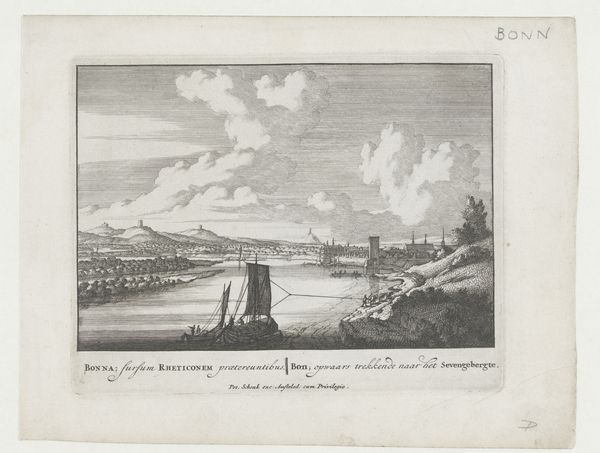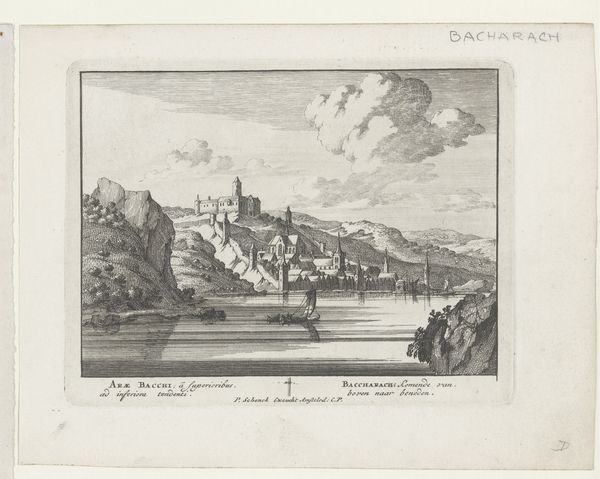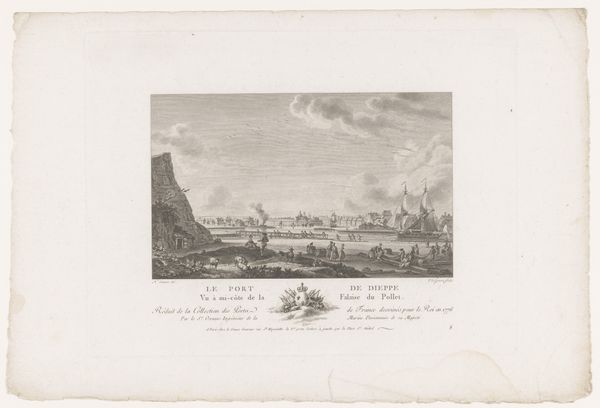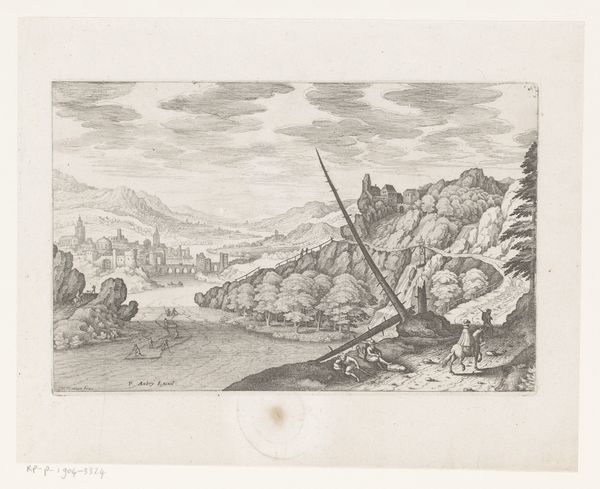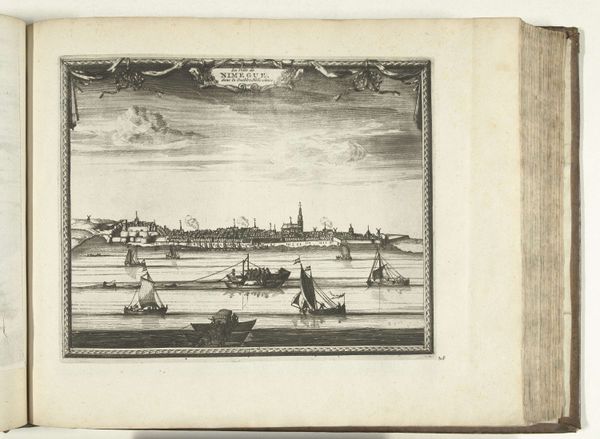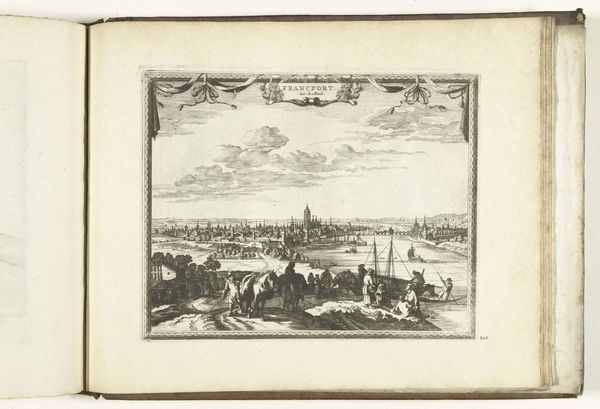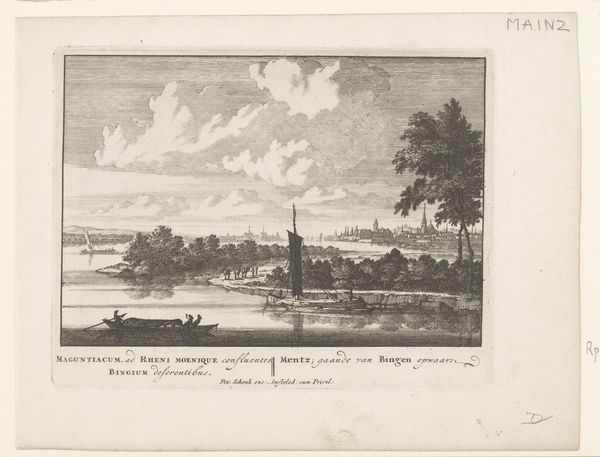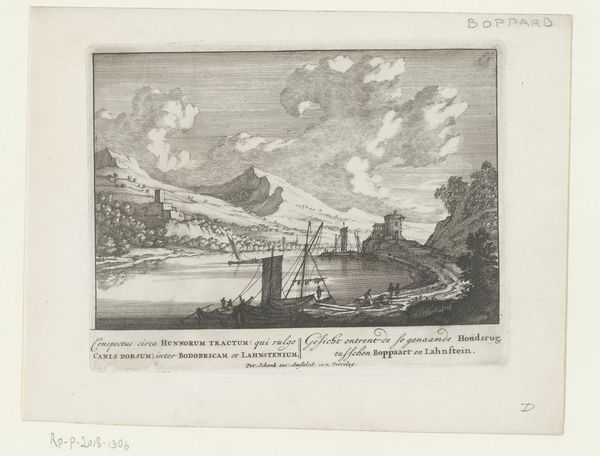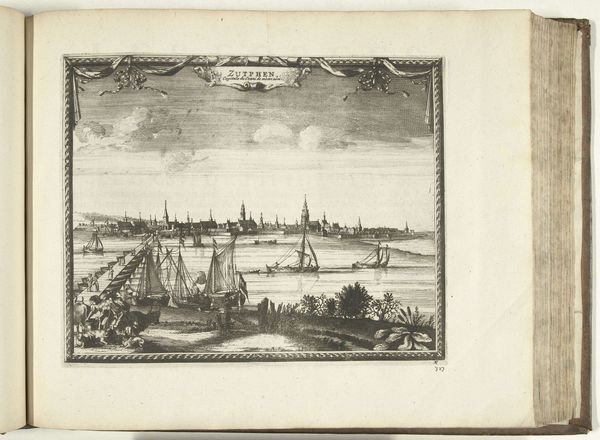
print, engraving
#
baroque
#
ink paper printed
# print
#
old engraving style
#
landscape
#
cityscape
#
engraving
Dimensions: height 132 mm, width 170 mm
Copyright: Rijks Museum: Open Domain
Pieter Schenk created this print of Bingen using etching and engraving techniques sometime between 1670 and 1711. These processes involve working directly on a metal plate, a skilled and laborious process. The artist would have first coated a copper plate with wax, then used a sharp needle to draw the image, exposing the metal. Next, the plate was submerged in acid, which bit into the exposed lines. For the engraved portions, the artist would have used a burin to directly incise lines into the plate. The plate was then inked, and wiped clean, leaving ink only in the etched and engraved lines. Finally, the plate was pressed onto paper, transferring the image. Consider the labor invested in creating this image, and the number of prints that could then be made from the single plate, allowing for wider distribution of the image. The techniques used, and the resulting image, reflect the intersection of craft, design, and materiality, and also the rise of print culture and visual communication in the early modern era.
Comments
No comments
Be the first to comment and join the conversation on the ultimate creative platform.
